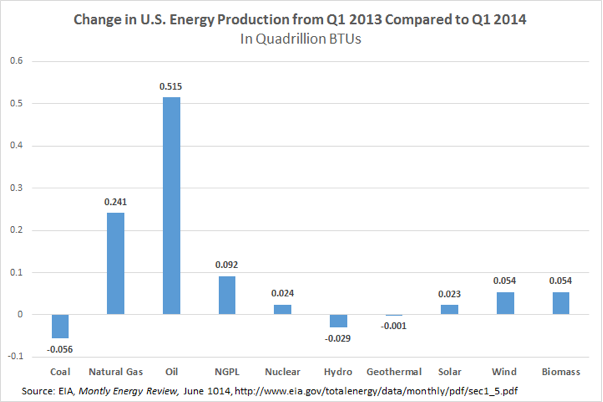Every day, the Energy Information Administration (EIA) sends out a short email called Today in Energy with some of the latest facts about energy. On Monday, EIA wrote about Texas hitting a new peak wind output, on Tuesday EIA wrote about fewer wind curtailments in Texas after building $7 billion in new power lines, and on Wednesday EIA wrote about how California hit a new solar record. On Wednesday afternoon, EIA announced a new Monthly Energy Review and touted the increase in renewable energy consumption. So it might come as a shock to see that natural gas and oil production are increasing far faster than wind and solar.
The chart below shows the change in energy production in the U.S. from the first quarter of 2013 compared to the first quarter of 2014 from EIA’s Monthly Energy Review. It turns out that combined natural gas and oil production is increasing nearly 10 times as fast as the combined growth in solar and wind in absolute terms.
This is the difference between energy production driven by free markets and energy production driven by subsidies. Natural gas and oil production are increasing because of production on private and state lands as we recently explained here. Solar and wind installations are driven by subsidies as EIA notes here. While subsidies can help solar and wind increase production, that production is still dwarfed by market-driven demand for energy that is affordable and reliable.
IER Summer Associate David Greenberg authored this post.
